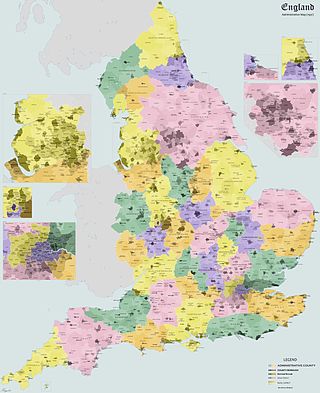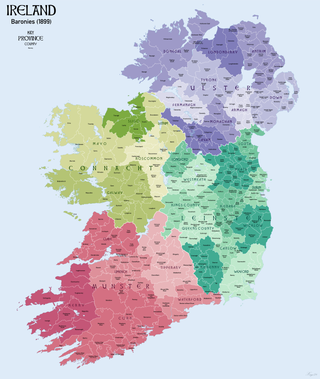
A borough is an administrative division in various English-speaking countries. In principle, the term borough designates a self-governing walled town, although in practice, official use of the term varies widely.

A municipal borough was a type of local government district which existed in England and Wales between 1836 and 1974, in Northern Ireland from 1840 to 1973 and in the Republic of Ireland from 1840 to 2002. Broadly similar structures existed in Scotland from 1833 to 1975 with the reform of royal burghs and creation of police burghs.

Galway City Council is the local authority in the city of Galway, Ireland. As a city council, it is governed by the Local Government Act 2001. The council is responsible for housing and community, roads and transportation, urban planning and development, amenity and culture, and environment. The council has 18 elected members. Elections are held every five years and are by single transferable vote. The head of the council has the title of mayor. The city administration is headed by a Chief Executive, Patricia Philbin. The council meets at City Hall, College Road, Galway.
A county corporate or corporate county was a type of subnational division used for local government in England, Wales, and Ireland.

The Municipal Corporations Act 1835, sometimes known as the Municipal Reform Act, was an Act of the Parliament of the United Kingdom that reformed local government in the incorporated boroughs of England and Wales. The legislation was part of the reform programme of the Whigs and followed the Reform Act 1832, which had abolished most of the rotten boroughs for parliamentary purposes.
A municipal corporation is the legal term for a local governing body, including cities, counties, towns, townships, charter townships, villages, and boroughs. The term can also be used to describe municipally owned corporations.
Unreformed boroughs were those corporate towns in England and Wales which had not been reformed by the Municipal Corporations Act 1835. A handful of these obtained new charters under the 1835 Act. A royal commission was established in 1876 to inquire into these boroughs, and legislation passed in 1883 finally forced the reform or dissolution of these corporations by 1886.
Town commissioners were elected local government bodies that existed in urban areas in Ireland from the 19th century until 2002. Larger towns with commissioners were converted to urban districts by the Local Government (Ireland) Act 1898, with the smaller commissions continuing to exist beyond partition in 1922. The idea was a standardisation of the improvement commissioners established in an ad-hoc manner for particular towns in Britain and Ireland in the eighteenth century. The last town commissioners in Northern Ireland were abolished in 1962. In the Republic of Ireland, the remaining commissions became town councils in 2002, and abolished in 2014.
Clonmel was a United Kingdom Parliament constituency in Ireland, returning one MP from 1801 to 1885. It was represented in Parliament when the Union of Great Britain and Ireland took effect on 1 January 1801.
Borough status is granted by royal charter to local government districts in England, Wales and Northern Ireland. The status is purely honorary, and does not give any additional powers to the council or inhabitants of the district. In Scotland, similarly chartered communities were known as royal burghs, although the status is no longer granted.
The Belfast Borough Police was the police force for Belfast from 1800 to 1865, when it was abolished and replaced by the Royal Irish Constabulary (RIC). Its members, nicknamed the Bulkies, had authority within the Belfast Police District.
The Royal Commission on the Corporation of the City of London was a royal commission, established in 1853, which considered the local government arrangements of the City of London and the surrounding metropolitan area.

The Short Titles Act 1896 is an act of the Parliament of the United Kingdom. It replaces the Short Titles Act 1892.
In Ireland, the term city has somewhat differing meanings in Northern Ireland and the Republic of Ireland.

Carrickfergus is a barony in County Antrim, Northern Ireland. It is bounded on the south-east by Belfast Lough, and otherwise surrounded by the barony of Belfast Lower. It is coextensive with the civil parish of Carrickfergus or St Nicholas and corresponds to the former county of the town of Carrickfergus, a county corporate encompassing Carrickfergus town.

Macreddin, is a hamlet in County Wicklow, in the southern foothills of the Wicklow Mountains, 4 km north of Aughrim on the back road to Greenan. The historical borough is in the townland of Macreddin West in the civil parish of Ballykine, barony of Ballinacor South. It also gives its name to the adjacent townland of Macreddin East.
Municipal Corporations Act is a stock short title used in the United Kingdom for legislation relating to municipal corporations.

Galway is a barony in Ireland, comprising Galway city and surrounding parts of County Galway. The barony is coterminous with the former County of the Town of Galway, a county corporate created by the town's 1610 charter and abolished by the Local Government (Ireland) Act 1898.

The Berwick-on-Tweed Act 1836 was an act of the Parliament of the United Kingdom passed to remedy some defects of the Municipal Corporations Act 1835. It was also referred to as the Municipal Boundaries Bill and the Municipal Corporation (Boundaries) Act 1836.









